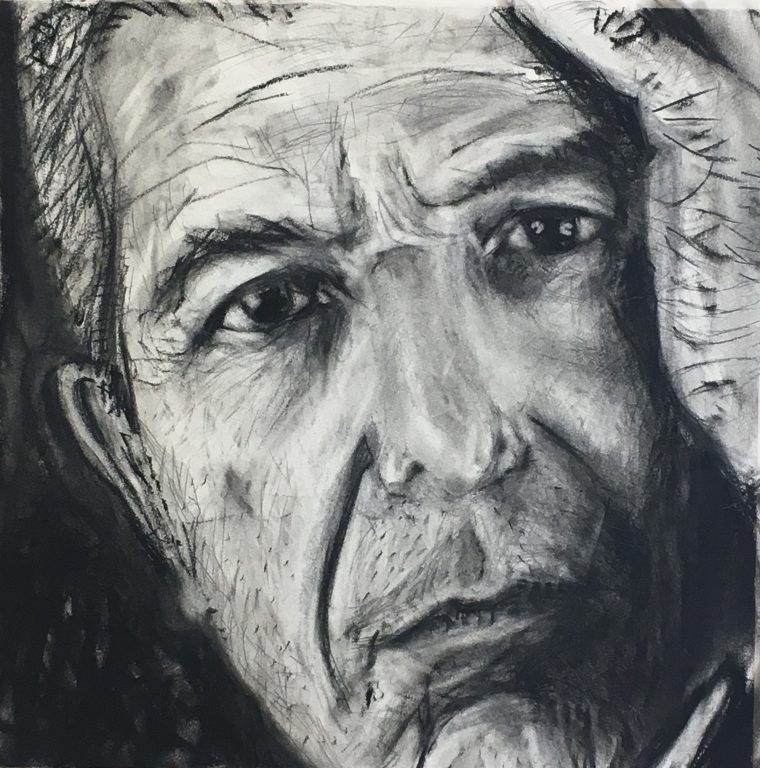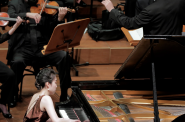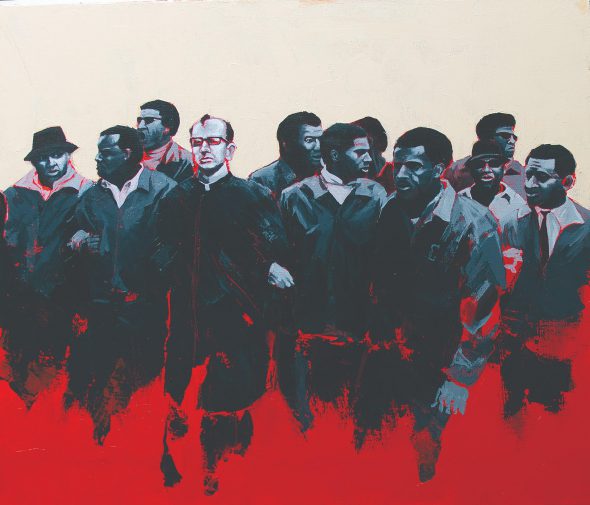End of the Line
RedLine gallery will close after its final exhibition, on display this month.

“You Don’t Really Care for Music, Do You?” (latex, charcoal, graphite on Masonite board; 96” x 96”) by Marc Tasman.
After 10 years of valuable contributions to the Milwaukee art community, the nonprofit group RedLine Milwaukee, 1422 Vel R. Phillips Ave., will be closing its doors at the end of June.
For a decade, RedLine Milwaukee has rented studio space to artists, and has offered art and education workshops for children and adults, including printmaking, social justice and professional development, in a supportive environment. Over 100 artists have participated in RedLine’s residency program, and the gallery has exhibited work from a number of internationally-known artists, among them Heimo Wallner, Terese Agnew, Justin Cooper, and JoAnna Poehlmann.
“Ultimate TimeLine: RedLine’s Final Exhibition,” on display through June 29, showcases the work of 17 of RedLine’s diverse artists-in-residence: Melanie Ariens, Emily Belknap, Blanche Brown, Stephanie Copoulos-Selle, Joshua Cowell, Jake Hill, William Hurst, Dara Larson, Chad Matha, Tara Monnink, LaSonia Ragsdale, Kerri Root, Reid Sancken, Sara Shuler, Anja Notanja Sieger, Marc Tasman and Julie VonDerVellen.
Gallery visitors are immediately greeted by Tasman’s near-lifelike, black-and-white depiction of singer/songwriter Leonard Cohen, “You Don’t Really Care for Music, Do You?” (latex, charcoal, graphite on Masonite board; 96” x 96”).
RedLine artists often work together, mentoring one another. The description of Tasman and Cowell’s “Exquisite Corpse: The Isaiah Project” encourages its audience to imagine materials used to make instruments that cause harm (guns; knives, spears, etc) repurposed to create “another kind of tool for social uplift.” Visitors can then add to the drawing using the art materials provided.
Monnink and Ragsdale’s “Untitled Collaborative Work Using Tactile Materials” (knitted paper; beads) and Brown and Copoulos-Selle mixed-media piece “Multi-Cultural Family,” a near-lifesize, paper-doll-like work of three figures featuring actual clothing and collaged faces and hands, illustrate these artistic collaborations.
The city of Milwaukee, its civil rights trailblazers, architecture and other natural landmarks are prevalent themes in the exhibit.
For example, Hurst’s graphically-styled, red, black, white and gray paintings of Milwaukee civil rights leaders like Vel Phillips and Father James Groppi pay tribute to two important social justice figures.
Ariens and Monnink capture the azure beauty of Lake Michigan with an elaborate multimedia shrine containing rocks, shells, and photographs, and striking prints on handmade paper. Ariens asks her viewers to consider where their water for drinking and household uses comes from. Belknap’s fragmented “Trail Blazers” uses multi-colored, curved lines carved in drywall. This could represent the precarious state of the environment, and how humans flocking to popular nature spots can harm animal habitats.
Sancken and Matha’s large multimedia installations contain a mix of retro, kitsch and eclectic objects. Matha’s “clubhouse” features a tube television with a hollowed-out center, filled with “Americana” objects like a pack of Marlboro cigarettes and a miniature American flag, in the middle of a living room. White 1960s-style cat knickknacks and brightly-colored flowers add a whimsical touch. A mannequin, representing a young artist (which, at first glance, looks incredibly realistic) sits with its back turned. Sancken’s installation showcases what appears to be a blown-up still from a Western movie, a faux piece of animal fur and hide, and a mannequin wearing a sort of black protective vest.
These installations provide an interesting contrast to other exhibit works, such as Ragsdale’s vividly colored oil paintings of flowers and portraits, and Jake Hill’s “Happening Spots,” a photography series focusing on exterior and exterior venues that host special events. Sieger and Larson’s works contain lively and intense elements of myth, poetry and fantasy.
Although the RedLine nonprofit group is dissolving, building owner Lori Bauman intends to keep the building as an artists’ space, renting out studio space. This summer, she will launch Wisconsin Arts Lab.
“Right now, there is a lot of available space upstairs. We want to keep this an artists’ community,” said RedLine gallery manager and artist Angela Pierro.
If you think stories like this are important, become a member of Urban Milwaukee and help support real independent journalism. Plus you get some cool added benefits, all detailed here.
Art
-
Winning Artists Works on Display
 May 30th, 2024 by Annie Raab
May 30th, 2024 by Annie Raab
-
5 Huge Rainbow Arcs Coming To Downtown
 Apr 29th, 2024 by Jeramey Jannene
Apr 29th, 2024 by Jeramey Jannene
-
Exhibit Tells Story of Vietnam War Resistors in the Military
 Mar 29th, 2024 by Bill Christofferson
Mar 29th, 2024 by Bill Christofferson
Preview
-
PianoArts Festival Features Rising Stars
 May 28th, 2024 by Michael Barndt
May 28th, 2024 by Michael Barndt
-
Four Nations Ensemble Goes For Baroque
 May 13th, 2024 by Michael Barndt
May 13th, 2024 by Michael Barndt
-
Mozart on Prospect Avenue
 May 9th, 2024 by Martha Brown
May 9th, 2024 by Martha Brown























